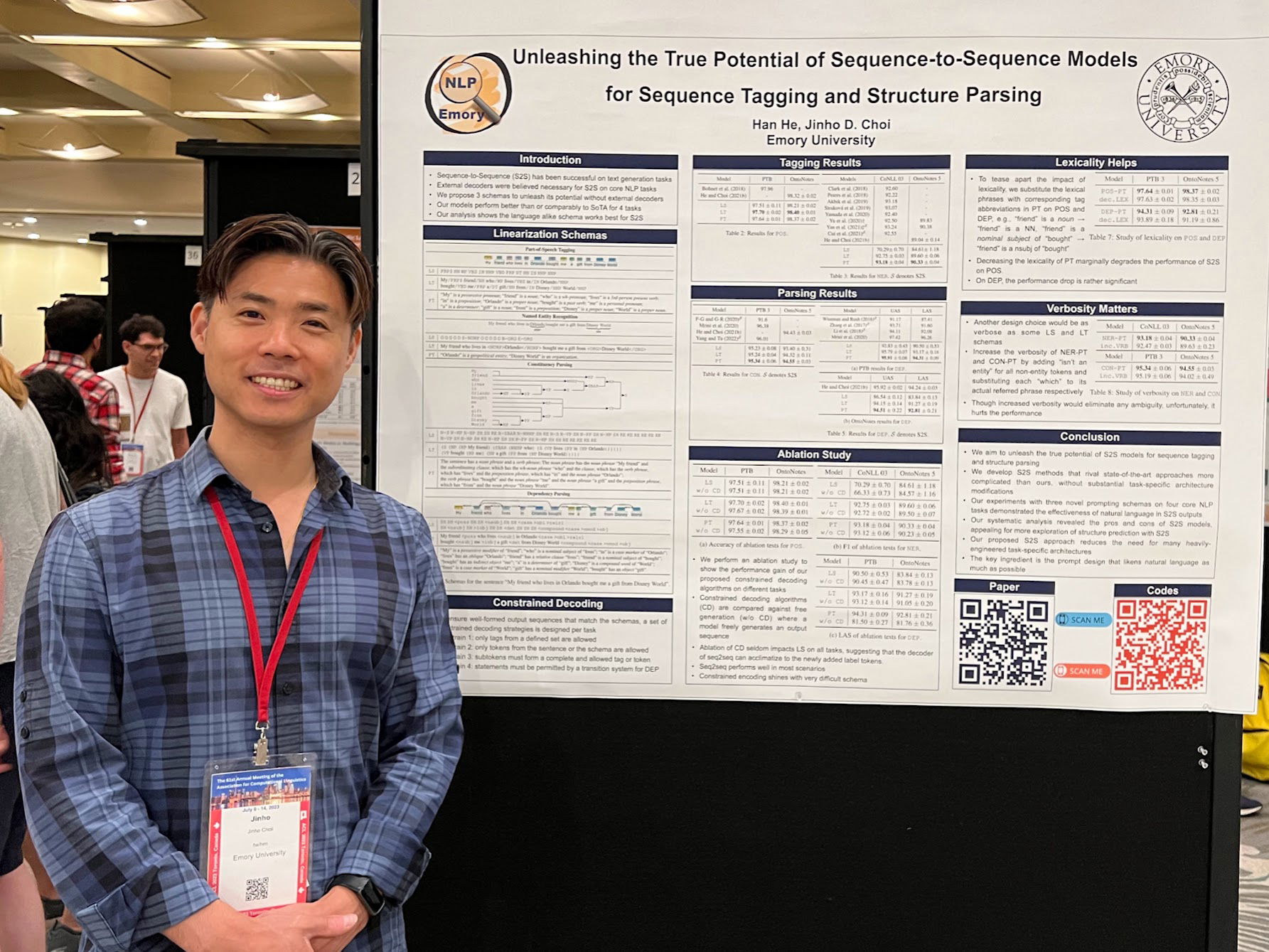TACL 2023 - He and Choi
Unleashing the True Potential of Sequence-to-Sequence Models for Sequence Tagging and Structure Parsing
Han He, Jinho D. Choi
Abstract
Sequence-to-Sequence (S2S) models have achieved remarkable success on various text generation tasks. However, learning complex structures with S2S models remains challenging as external neural modules and additional lexicons are often supplemented to predict non-textual outputs. We present a systematic study of S2S modeling using contained decoding on four core tasks: part-of-speech tagging, named entity recognition, constituency and dependency parsing, to develop efficient exploitation methods costing zero extra parameters. In particular, 3 lexically diverse linearization schemas and corresponding constrained decoding methods are designed and evaluated. Experiments show that although more lexicalized schemas yield longer output sequences that require heavier training, their sequences being closer to natural language makes them easier to learn. Moreover, S2S models using our constrained decoding outperform other S2S approaches using external resources.Our best models perform better than or comparably to the state-of-the-art for all 4 tasks, lighting a promise for S2S models to generate non-sequential structures.
Venue / Year
Transactions of the Association for Computational Linguistics (TACL) / 2023
Links
Anthology | Paper | Poster | BibTeX | GitHub
